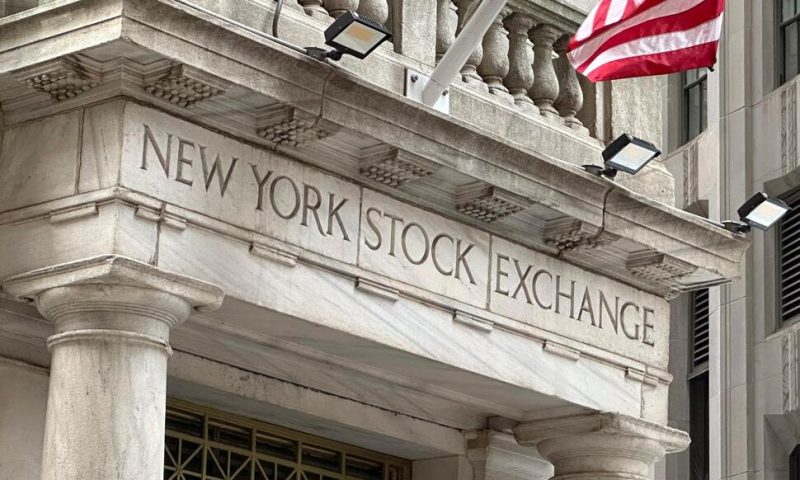Stocks inched higher on Wall Street as markets wait for a key report on inflation
Major stock indexes on Wall Street closed little changed Thursday as traders looked ahead to a key report on inflation that could influence the Federal Reserve’s next move on interest rates.
The S&P 500 eked out a 0.1% gain. The benchmark index has been hovering near the all-time high it set last week.
The Nasdaq composite rose 0.3% and remains just below its all-time high. The Dow Jones Industrial Average closed 0.1% higher.
Gains in retailers and communications services companies helped outweigh losses in consumer goods makers, financial stocks and elsewhere in the market. Amazon.com rose 2.2% and Meta Platforms added 1.3%.
Walgreens Boosts Alliance plunged 22.2% for the biggest drop in the S&P 500. It reported results that fell shy of forecasts and cut its outlook. The company said it could close hundreds more stores in the next three years.
Jeans maker Levi Strauss sank 15.4% after its latest quarterly revenue results fell short of analysts’ expectations, along with its current earnings forecast for the year.
Spice maker McCormick rose 4.3% for one of the biggest gains in the market after beating analysts’ earnings forecasts.
Chipmaker Micron Technology fell 7.1% after its latest forecast left investors disappointed.
Treasury yields fell in the bond market. The yield on the 10-year Treasury, which influences interest rates on mortgages and other consumer loans, fell to 4.28% from 4.33% late Wednesday. The yield on the two-year Treasury fell to 4.71% from 4.75%.
An update from the government said the American economy expanded at a 1.4% annual pace from January through March. The figure is a slight revision from a prior estimate of 1.3%. It marks the slowest quarterly growth since spring 2022.
The report also backed data from previous economic reports that show consumers are getting squeezed by persistent inflation and high interest rates. Consumer spending, which has been fueling economic growth, grew at just a 1.5% rate, down from an initial estimate of 2%, according to the report.
The main upshot from the report is that “the economy remained resilient in the first quarter but that private sector demand growth was cooling, led by more consumer prudence,” said Gregory Daco, EY chief economist, in a note.
The slowdown in consumer spending could help further ease inflation, but too much of a slowdown could result in a more painful hit to the economy. The Federal Reserve is trying to time its efforts tame inflation back to its 2% target without slowing the economy so much that it slips into a recession.
The stock market has been listless this week in the lead up to Friday’s release of the next influential inflation report from the government. The personal consumption expenditures index, or PCE, is the Fed’s preferred measure of inflation.
Economists expect the report to show a modest easing of inflation to 2.6% in May, following a 2.7% reading in April. That’s down from the PCE’s peak of 7.1% in the middle of 2022. Other measures of inflation, including the consumer price index, have also eased significantly over the last two years.
The latest updates on inflation could influence the central bank’s decision on when to begin cutting interest rates, which remain at their highest level in more than 20 years and which are having an impact worldwide. Wall Street is betting that the central bank will start cutting interest rates at its September meeting.
The S&P 500 is on pace to notch its fourth straight winning week. With one more trading day left this month, the index is up just under 4% for June and up about 15% so far this year.
All told, the S&P 500 rose 4.97 points to 5,482.87. The Dow added 36.26 points to 39,164.06. The Nasdaq gained 53.53 points to close at 17,858.68.

